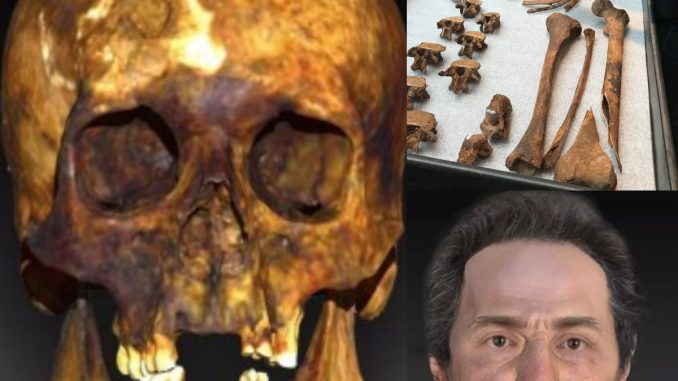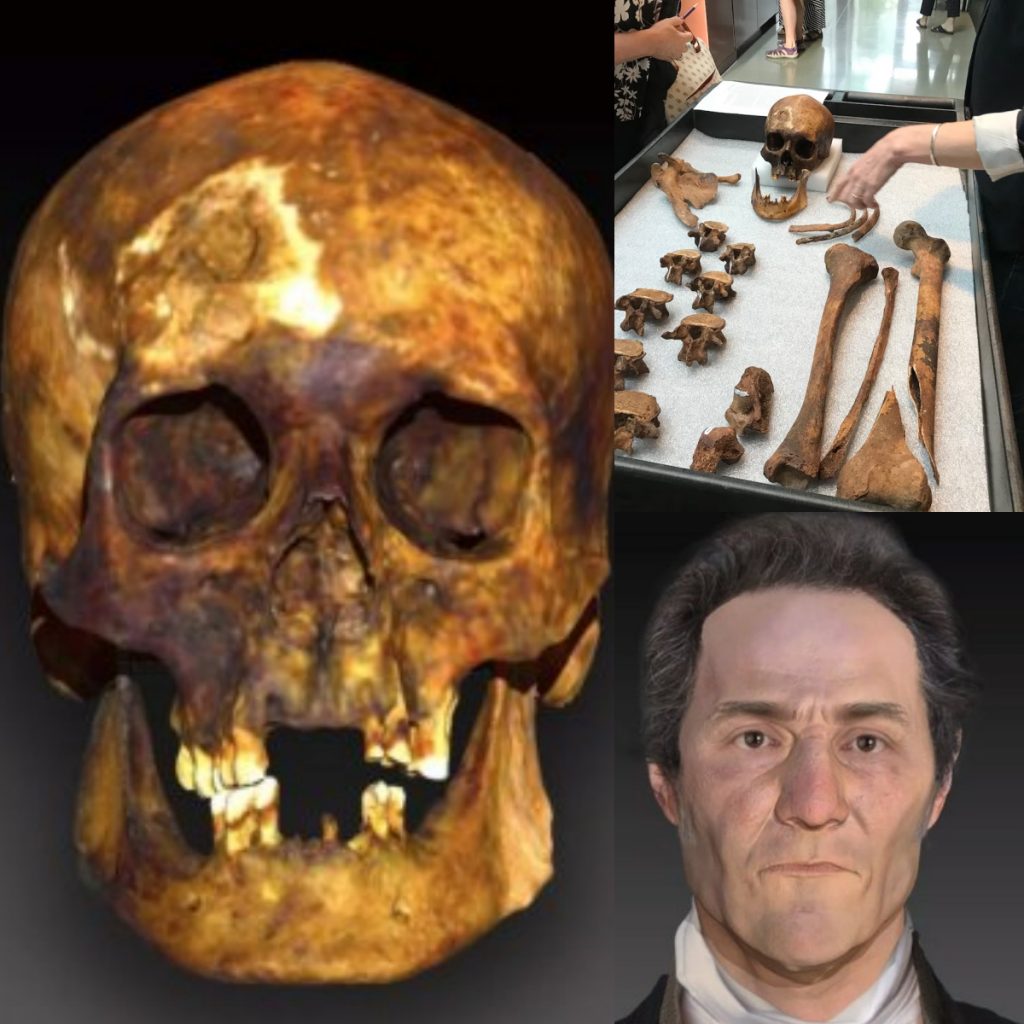
In the annals of folklore and legend, tales of vampires have long captured the human imagination, inspiring fear and fascination for centuries. Recently, scientists have delved into one of these legends, using cutting-edge DNA analysis to reconstruct the face of an 18th-century ‘vampire’ buried in an unusual manner to prevent him from attacking the living.
The discovery took place in the remote village of Kamien Pomorski in northwestern Poland, where archaeologists unearthed the skeletal remains of a man dating back to the 18th century. What set this find apart was the presence of a brick forcibly inserted into the mouth of the skeleton—a practice believed to prevent the deceased from rising from the grave and feasting on the blood of the living.
Initially dismissed as superstition, the burial practice took on new significance when scientists began to analyze the remains using advanced DNA techniques. By extracting DNA samples from the skeletal remains and comparing them to modern populations, researchers were able to determine the man’s ancestry and physical characteristics with remarkable accuracy.
What emerged from the analysis was a surprising portrait of the ‘vampire’ buried in the grave. Contrary to popular depictions of vampires as supernatural creatures, the man was found to be of Slavic descent, with features typical of the region’s population at the time. His age at death was estimated to be around 40-50 years old, and evidence of dental problems suggested a diet rich in carbohydrates—a common characteristic of the era.

Using this genetic data as a foundation, forensic artists then set out to reconstruct the man’s face, breathing life into the bones of the long-dead ‘vampire.’ Employing state-of-the-art techniques, including 3D modeling and computer-generated imagery, the artists painstakingly recreated the man’s facial features, fleshing out the details based on scientific data and historical context.
The result was a hauntingly lifelike depiction of the 18th-century ‘vampire,’ offering a glimpse into the face of a legend that has captured the human imagination for centuries. With his sunken eyes, prominent cheekbones, and weathered skin, the reconstructed face evoked a sense of mystery and intrigue, inviting viewers to contemplate the man behind the myth.
But beyond the fascination with vampires and folklore, the discovery and reconstruction shed light on the cultural and historical context in which such beliefs emerged. In the 18th century, superstitions about vampires were widespread in Eastern Europe, fueled by fears of disease, death, and the unknown. Burial practices like the one observed in Kamien Pomorski were a reflection of these beliefs, serving as a form of protection against perceived threats.
As science continues to unravel the mysteries of the past, stories like that of the 18th-century ‘vampire’ offer valuable insights into the human experience and the enduring power of myth and legend. While the truth behind the vampire may never be fully known, the quest to understand our shared history and culture remains as compelling as ever, reminding us of the rich tapestry of human existence and the stories waiting to be told.
Leave a Reply